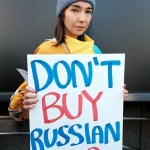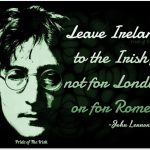昨日は「昭和の日」だった。「降る雪や明治は遠くなりにけり」は中村草田男の俳句だが、令和の時代になって昭和もいっそう遠く感ずるようになった。

「昭和とは どんな眺めぞ 花へんろ」とは、1985年から1988年にかけて放送されたNHKのドラマ「花へんろ」の冒頭に詠まれる俳句である。
脚本を書いたのは早坂暁氏(1929年~2017年)で、早坂氏は、海軍兵学校の生徒として終戦を迎え、そして郷里へ帰る途中、広島駅で一泊し、原爆投下後の惨状を目の当たりにする。
「花へんろ」第三章第6話の最後に主人公の震一(早坂氏がモデル)が、広島の原爆で亡くなった従兄弟の昇の母・蝶子に「僕、兵学校から帰ってくるとき、広島を通ったんです。8月18日。広島駅に列車が留まったら、広島が掃除したように焼け野が原になっている。雨が降っていて、青い火が燃えている。『あの青い火は何ですか』と駅員に聞いたら、死んだ人のリンが燃えているんじゃと。何百、何千の青い火が燃えてきれいじゃった。その中の一つが昇さんじゃったんじゃねぇ。」

早坂氏の作品のテーマには原爆の悲惨さや戦争をしてはいけない爆弾ができてしまったことをどうやって伝えるかというものがある。2013年8月3日付の「日本経済新聞」で次のように述べている。
「戦後68年間、日本人は他国へ出かけて1人の敵兵も殺さなかった。これを最高の誇りと考えなければいけないのです。今の戦争放棄の憲法を押しつけだなどと主張する人がいるが、とんでもない。戦争放棄を選んだ背景には、第2次大戦で亡くなった300万を超える兵士や市民の血と涙の叫びがある。

僕のいとこに、ビルマのジャングルで死んだ『ゲン兄ちゃん』がいます。半分水に浸かりケガで歩けなくなった彼は、母国に体を向けてくれと戦友に頼んで独り死んだ。何百万人の日本兵の血と何千万人のその家族の涙が戦争放棄の憲法を生み出したことを、今の日本人は忘れてはいけない。(中略)
日本でも東日本大震災で東京電力福島第1原発事故を経験したのに、もう原発輸出が話題になっている。放射能のごみの処理すらできないのに、です。経済はとても大切です。確かに人間は食べないと生きていけない。でも、食べてはいけないものは食べてはいけないのです」
早坂さんは、自分たちを「日々少なくなっていく絶滅危惧種」と言いながら、「戦後を託された4000人の海兵78期生の生き残り」として平和のメッセージを送り続けた。

「戦争や 人の命の イワシかな」(「花へんろ」で詠まれる俳句)
昭和の時代、多くの人から語られていた戦争体験もいつの間にか歴史の中で知られることになっている。激動の昭和の歴史は、その戦争も戦後復興も令和の時代の日本人に数多くの教訓を与えている。
Yesterday was “Showa Day”. “The falling snow and the Meiji era are far away” is a haiku by Nakamura Kusatao, but in the era of Reiwa, the Showa era became even more distant.
“What kind of view is Showa, Hanahenro (Flower Pilgrimage)?” was a haiku poem introduced at the beginning of the NHK drama “Hanahenro” that was broadcast from 1985 to 1988.
The script was written by Akira Hayasaka (1929-2017), who ended the war as a student of the Navy School and stayed overnight at Hiroshima Station on his way home, witnessing the tragedy after the atomic bomb was dropped.
At the end of Chapter 3, Episode 6 of “Hanahenro,” the main character, Shinichi (modeled by Mr. Hayasaka), told Choko, the mother of her cousin Noboru, who died in the atomic bombing of Hiroshima, “When I come back from military school, I passed through Hiroshima on August 18th. When the train stopped at Hiroshima station, seeing the burnt field as if Hiroshima was cleaned up. It was raining and the blue fire was burning. “That blue fire is. When I asked the station clerk, answering the dead person’s phosphorus was burning. Hundreds and thousands of blue fires were burning and beautiful. One of them was Noboru-san. “

https://jp.reuters.com/news/picture/the-atomic-bombings-of-hiroshima-and-nag-idJPRTX7NI7P
The theme of Mr. Hayasaka’s work is how to convey the misery of the atomic bomb and the fact that a bomb that should not be at war has been created. The Nihon Keizai Shimbun, dated August 3, 2013, Mr. Hayasaka stated as follows.
“For 68 years after the war, no Japanese went to other countries and did not kill even one enemy soldier. We must take this as our greatest pride. Some people claim that it is imposing the current constitution of abandonment of the war. But it’s ridiculous. Behind the choice to abandon the war is the blood and tears of more than 3 million soldiers and citizens who died in World War II.
My cousin called “Gen-niichan” who died in the jungle of Burma. He was half soaked in water and couldn’t walk because of an injury. He asked his comrades to turn his body to his home country and died alone. Today’s Japanese must not forget that the blood of millions of Japanese soldiers and the tears of tens of millions of their families created a constitution to abandon the war. (Omitted)
Even in Japan, even though we experienced the accident at the Fukushima Daiichi Nuclear Power Plant of Tokyo Electric Power Company due to the Great East Japan Earthquake, the export of nuclear power plants has already become a hot topic. We can’t even dispose of radioactive waste. The economy is very important. Certainly humans cannot live without eating. But you shouldn’t eat what you shouldn’t eat. “
Mr. Hayasaka continued to send a message of peace as “survival of 4000 marines entrusted with the postwar period, 78th generation,” while calling themselves “endangered species that are decreasing day by day.”

“In war, human life is like a squid?” (Haiku poemed in “Hanahenro”)
In the Showa era, the war experience that was told by many people is becoming known in history. The turbulent Showa history both in the war and in the postwar reconstruction has taught many lessons to the Japanese in the Reiwa era,



コメント